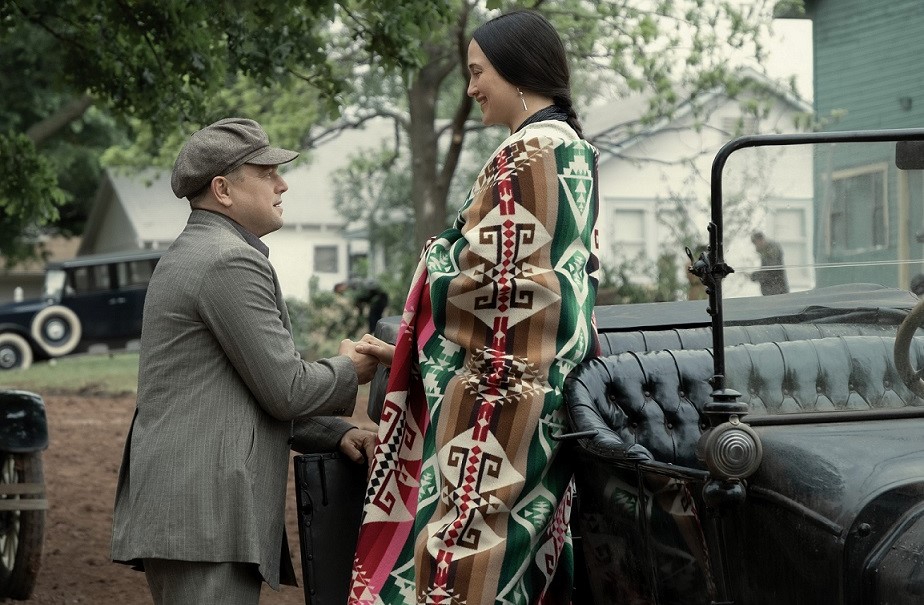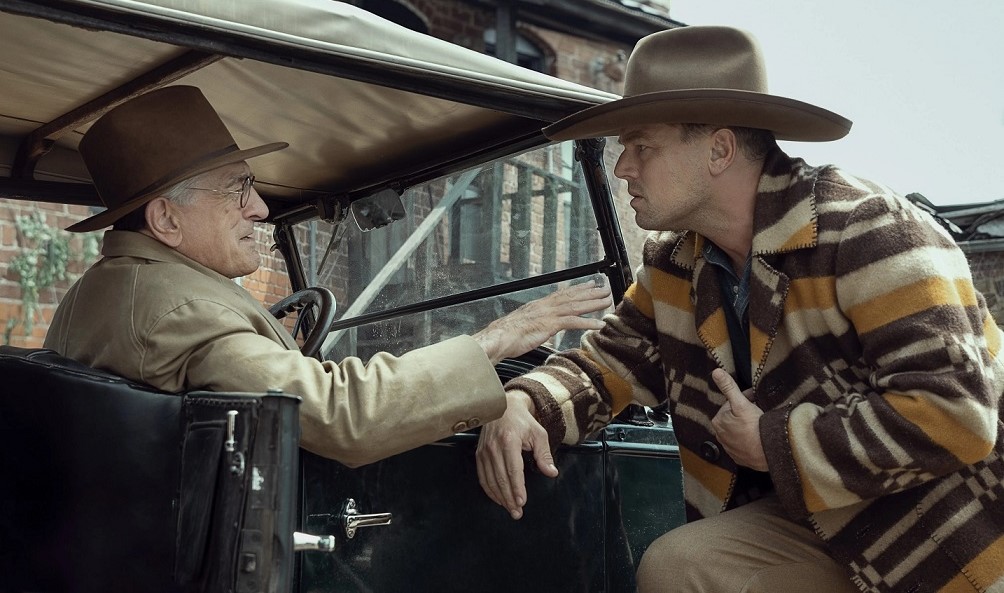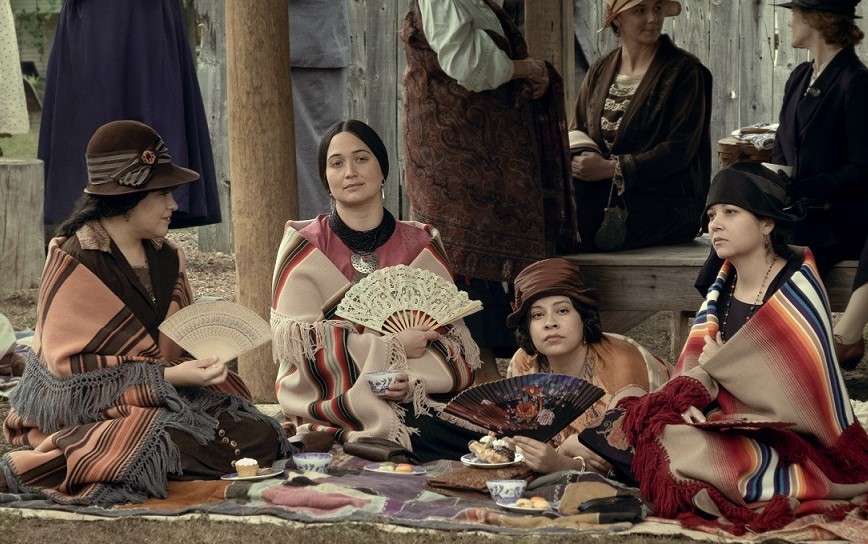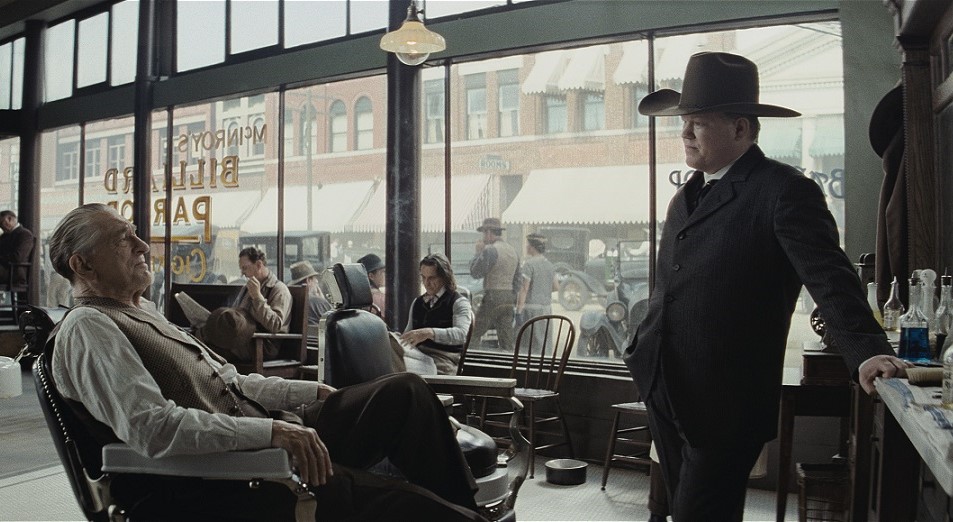
Running Time: 206 minutes
This feature from Paramount Pictures and Apple Original Films opens exclusively in theaters on October 20th. A streaming release date through Apple TV+ has yet to be announced.
Legendary director Martin Scorsese has made his fair share of lengthy epics, including Goodfellas, Casino, Gangs of New York, The Aviator, The Departed and The Wolf of Wall Street among many others. His previous feature, The Irishman, was his most detailed and extended tale, running three-and-a-half hours in length. While one might have guessed the filmmaker’s next project might be shorter and more intimate, the 80-year-old director’s latest is almost as long. Killers of the Flower Moon is a grim and solemn retelling of the series of Osage Nation murders that occurred in Oklahoma between the 1910s and 1930s.

The film begins by introducing viewers to the Osage Nation, whose land sits above vast oil deposits. They were the richest people in the country, but their cash flow was still controlled in part by the US government through a guardianship program. When war veteran Ernest Burkhart (Leonardo DiCaprio) arrives and meets with his uncle William King Hale (Robert De Niro), he discovers this “guardian” has a controlling interest in the bank and influence over physicians, businesses and the lives of every resident. Ernest takes a job as a cab driver and quickly falls for local Mollie Burkhart (Lily Gladstone), intimating that he is ready to settle down and live a quiet life. However, it soon becomes clear that there is a horrifying conspiracy afoot. As events progress, the lives of Mollie’s sisters Anna (Cara Jade Myers) and Minnie (Jillian Dion), her mother (Tantoo Cardinal), cousins and extended family are all at risk.

It’s a difficult story to tell when primary lead Ernest is so deeply flawed. However, DiCaprio and the rest of the cast are exceptional. The lead performer somehow manages to keep viewers intrigued in the figure and whether or not he might see the light of day and make amends for his actions. Gladstone possesses incredible poise and strength in the role of Mollie, also helping viewers get a clearer sense of how an immensely wealthy woman would agree to marry a white man whose intentions may not be entirely pure. And, of course, De Niro is a standout as Hale, the self-proclaimed “King of the Osage”. He rarely raises his voice in the first two-thirds of the picture, but exerts a control and intensity that commands the screen throughout.

As expected, the photography by frequent Scorsese collaborator Rodrigo Prieto is also top-notch. The imagery of the Osage people and their connection to the wildlife is beautiful to witness, as are the bustling streets filled with both the wealthy, as well as conniving business owners and crooks. As always, there are some lengthy master shots (and a few that have well-hidden edits within) and camera roams around on occasion, keeping viewers engaged in many conversations between individuals within a single environment. The violence depicted in the film, including several murders, are brief, blunt and appropriately jarring in their coldhearted execution.
The filmmaker definitely wants to tell the complete story of what occurred. And it’s a virtuous gesture to go through the specific details of exactly what happened to most of the victims. However, there are a few repetitive acts that upon first viewing seem like they could have been abbreviated or eliminated. Additionally, the first section is focused primarily on Ernest and Mollie, the middle unveiling the full scheme being perpetrated, and the final segments dealing with repercussions via courtroom drama. Yes, there are some cutaways here and there to past events (showing a couple of past events or explicitly what happened in regards to a murder), but the straightforward presentation of events and somber tone do weigh things down, requiring patience on the part of the viewer to see this story reach its destination.

But overall, this is a minor complaint. It may run long, but the movie still manages to hold one’s attention for the entirety of the running time. It’s an important story, beautifully acted and filmed with great precision and care. If you’re willing to commit the equivalent of sitting through a double-feature to take in one single film, the skill and artistry of Killers of the Flower Moon should satisfy.


